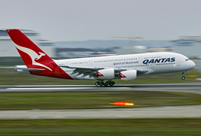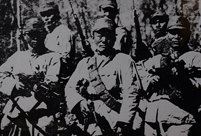 Ballerinas anywhere but onstage
Ballerinas anywhere but onstage
 Top 10 safest airlines in the world
Top 10 safest airlines in the world
 Top 10 most popular instant messaging apps in the world
Top 10 most popular instant messaging apps in the world
 Inspiring shadow images of Chinese army
Inspiring shadow images of Chinese army
 Models shine Xinjiang auto show
Models shine Xinjiang auto show
 From laid-off worker to int'l referee in bodybuilding
From laid-off worker to int'l referee in bodybuilding
 Selected photos of 'two sessions'
Selected photos of 'two sessions'
 Most unusual taxis around the world
Most unusual taxis around the world
 Bridge Worship Festival in Taijiang, SW China
Bridge Worship Festival in Taijiang, SW China
TOKYO, March 26 -- Two Global Hawk unmanned aerial vehicles (UAV) currently stationed in Guam will be deployed again to Misawa Air Base in Aomori Prefecture in Japan's northeast next year, Japan's Defense Ministry said Wednesday.
Two RQ-4 Global Hawk surveillance drones, currently stationed at Andersen Air Force Base in Guam, will deploy to Misawa Air Base from May to October provisionally, and possibly again in the future, along with around 40 personnel initially, the ministry said.
Parliamentary Vice Defense Minister Kenji Wakamiya remarked Wednesday that, "the temporary deployment will also be carried out next year and beyond."
Tokyo had previously been notified by the U.S. military at the beginning of this year of the planned deployment, as the U.S. has difficulties operating the drones in summer in Guam due to the frequency and intensity of typhoons in the region.
Wakamiya, speaking at a House of Representatives Foreign Affairs Committee earlier Wednesday, said the drones could use any airbase in Japan should the drones need to make an emergency landing as a result of a typhoon, for example, during reconnaissance missions.
The Global Hawk was used in Japan in disaster relief and recovery missions in the aftermath of the 2011 earthquake and tsunami and defense officials have noted that the drone's capabilities will assist Japan's maritime patrol missions.
The potential future deployment of the Global Hawk here is a boost to the U.S. Air Force who was previously considering retiring its fleet, but may now retire its fleet of U-2 high altitude reconnaissance planes instead, as the Global Hawk is proving to be a better investment in terms of price per flying hour, military strategists here said.
But the deployment may yet hit a stumbling block as the use of an unmanned surveillance aircraft, in some instances, contravenes Japan's Civil Aeronautics Law.
The law currently prohibits the flight of UAVs over Japan and doesn't recognize unmanned planes such as the Global Hawk under its definition of a "fixed-wing airplane."
Under the law, unmanned helicopters used for crop dusting, aerial photography and other purposes fall under a different category from regular fixed-wing planes and are prohibited from flying over inhabited areas, airports and surrounding areas.
The Global Hawk, which will be jointly operated by both the U.S. Air Force and Japan's Air Self-Defense Force (JASDF) in a bid to boost its reconnaissance and surveillance activities, will provisionally only be able to fly over exercise areas under the current law, senior Self Defense Force officials have stated.
The Transport Ministry here has said however that "stringent safety measures will have to be put into place if a UAV is to share airspace with regular planes," including provisions for if wireless ground communication to the UAV is cut off or impaired for some reason.
The Northrop Grumman-built Global Hawk can provide a broad overview and systematic surveillance of as much as 100,000 square kilometers of terrain a day, according to official sources, and can fly at an altitude of 18 kilometers for more than 30 hours.
The Transport Ministry, which holds jurisdiction over the Civil Aeronautics Law, said it will continue to discuss the matter with the defense ministry.
The defense ministry has said it plans to boost its spending for the next fiscal year, by adding an additional 200 million yen (about 2 million U.S. dollars) to cover the introduction of the Global Hawks next year.
 Female journalists at 'two sessions'
Female journalists at 'two sessions' Interpreters serving 'two sessions'
Interpreters serving 'two sessions' Female SWAT team in Chongqing
Female SWAT team in Chongqing Top 10 safest airlines in the world
Top 10 safest airlines in the world Old photos of Anti-Japanese War
Old photos of Anti-Japanese War Mysterious 'Dolan Tribe' in Xinjiang
Mysterious 'Dolan Tribe' in Xinjiang A bite of Luoping County
A bite of Luoping County This is Shanghai
This is Shanghai Chinese airborne troops complete parachute training in various training bases
Chinese airborne troops complete parachute training in various training bases Ballerinas anywhere but onstage
Ballerinas anywhere but onstage Most unusual taxis around the world
Most unusual taxis around the world Micro-expression at 'two sessions'
Micro-expression at 'two sessions' Bridge Worship Festival in Taijiang, SW China
Bridge Worship Festival in Taijiang, SW China Hollywood documentary brings Diaoyu Islands truth to new audience
Hollywood documentary brings Diaoyu Islands truth to new audience Miss HK and actresses shine at flower show
Miss HK and actresses shine at flower showDay|Week|Month